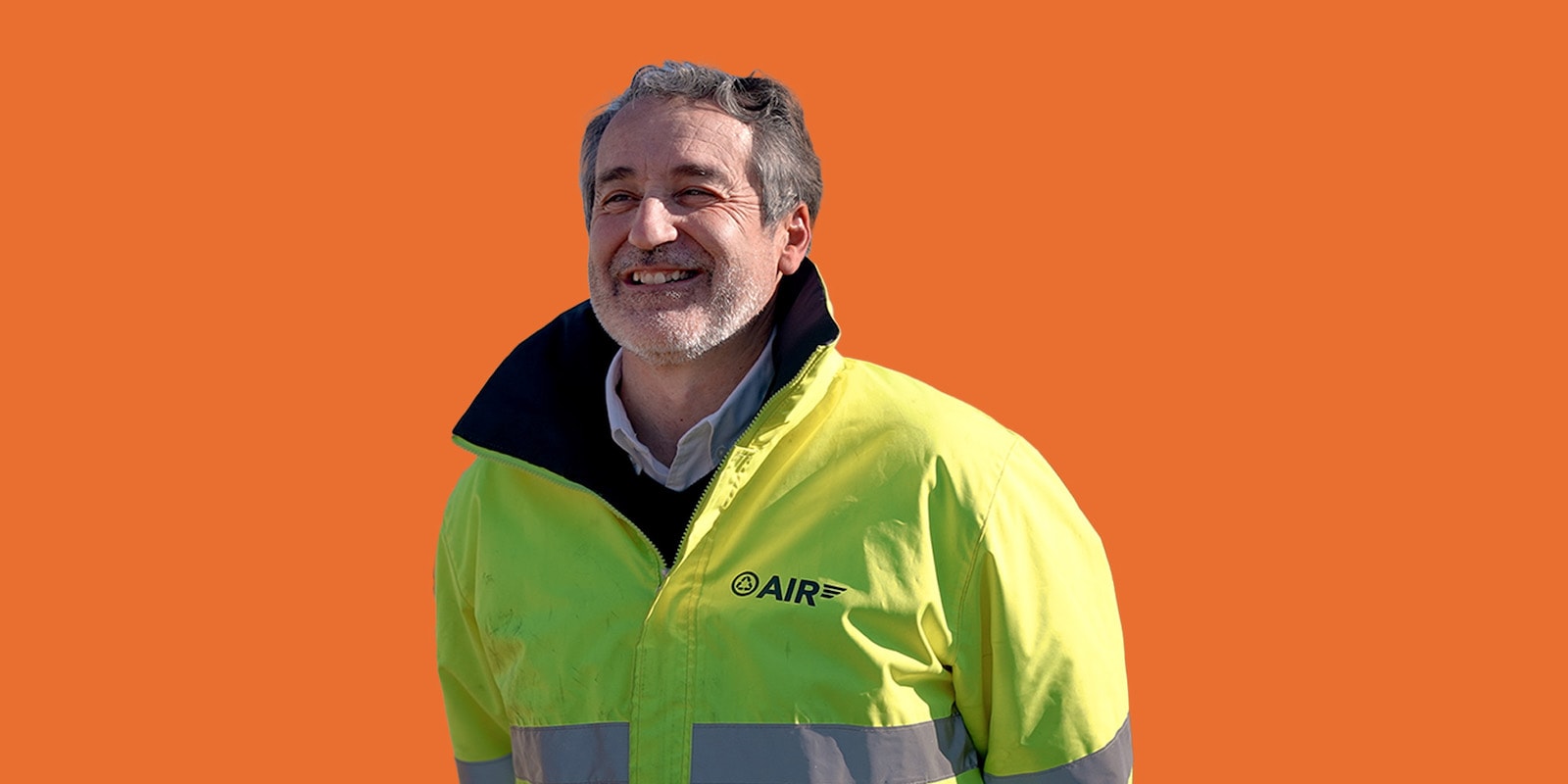Tuesday, April 1, 2025
Pedro Lama is the CEO of Aviation International Recycling (AIR), a Spanish company dedicated mainly to the dismantling and recycling of aircraft, which is a benchmark not only in our country, but also in Europe.
By Pablo Cerezal
We’re all familiar with airplanes and seeing them soar through the skies, but we rarely stop to think about how long they last. So, how long is an airplane’s lifespan, and what happens when it reaches the end?
On average, an airplane usually has a service life of between 20 and 25 years. However, some are retired earlier due to issues like corrosion or minor accidents. When operators and manufacturers decide to retire a plane, that’s when the recycling process begins.
Undoubtedly, aircraft recycling is of great importance to boost environmental sustainability. What percentage of material is usually reused?
Aircraft recycling involves two distinct processes. On one hand, there’s dismantling, which focuses on extracting high-value components. This includes the engine, the auxiliary power unit (APU), avionics components (such as electronic communication and navigation systems), and the hydraulic system. Once removed, these parts are either fully reused in other operational airplanes or sold. After dismantling is complete, the next step is recycling the remaining parts of the airplane. In this case, depending on how well the initial separation of materials was done, between 80% and 85% of these components can be recycled.
What is the reason for the remaining percentage not being recycled?
Usually, everything left inside an airplane gets broken down into a mixture of fiberglass, plastic, composite materials and carbon fiber, among others. As we specialize in remote projects, separating these materials is often not feasible for us. Right now, we’re working on creating a unique dismantling and recycling plant in Teruel, which will be the first of its kind in Europe. The aim of this project is to minimize the amount of waste sent to landfills and maximize the percentage of materials that can be recycled.
The decommissioning of aircraft whose service life has ended must be a complex task. From Aviation International Recycling (AIR), where does this process take place and for how long can it last?
So far, we don’t have a fixed base, which is why we’ve specialized in handling decommissioning processes remotely, traveling to wherever the airplane is located. As for the time, that depends on the type of airplane. Obviously there are many types of airplane, but in our business, they are mainly categorized between wide bodies, those with a wide fuselage, and narrow bodies, the most typical being the 320 and 737. A project for a wide body can last, on average, a month and a half for dismantling and a week for cutting. On the other hand, narrow body airplanes require about three to four weeks for dismantling and two to three days for cutting.
What is the most complex stage of the process?
That is definitely removing the heaviest components: the engines. Moreover, they're the most economically valuable, so they must be handled with great care to avoid damaging them. Managing hazardous materials, like fuel and hydraulic oils, is also crucial to prevent any residual contamination.
What are recycled materials typically used for?
During the dismantling process, components are reused in other fleets that are still in service, allowing them to re-enter the aviation sector. When we cut down the airplane, the most abundant material recovered is aluminum. After cleaning and separating it, it’s then sold again to aluminum castings foundries. Then there’s plastic. The plastics used inside airplanes are quite specialized. We’re currently focused on research and development projects to find ways to repurpose them more effectively, separate them more thoroughly and reintegrate them into the production cycle. This aspect of the project is still in the R&D phase.
Can recycling and reusing materials, along with the valuable support of SAF as a key element in decarbonizing the aviation sector, really make a difference in reducing CO2 emissions?
The sector is very aware of the reduction of emissions. SAF (Sustainable Aviation Fuel) is a fuel type that contributes to reducing CO2 emissions by up to 90% throughout its entire life cycle compared to traditional kerosene. In addition to using SAF (sustainable aviation fuel), we're developing innovative projects that aim to reduce our carbon footprint. Our customers are increasingly asking their suppliers for certifications that prove their procedures help reduce carbon emissions. It's a very important topic and we need to keep making progress on it moving forward.
AIR is the first company in Europe to achieve AFRA (Aircraft Fleet Recycling Association) certification. Can you explain why this certification is so important?
The Aircraft Fleet Recycling Association (AFRA) is an American organization that leads the world in aircraft recycling standards. When we founded the company 10 years ago, one of our top priorities was to earn AFRA accreditation. Numerous American companies that buy airplanes in Europe actively seek out AFRA-accredited businesses. This certification assures that all procedures adhere to AFRA's regulations and best practice manuals.
¿Te ha parecido interesante?





